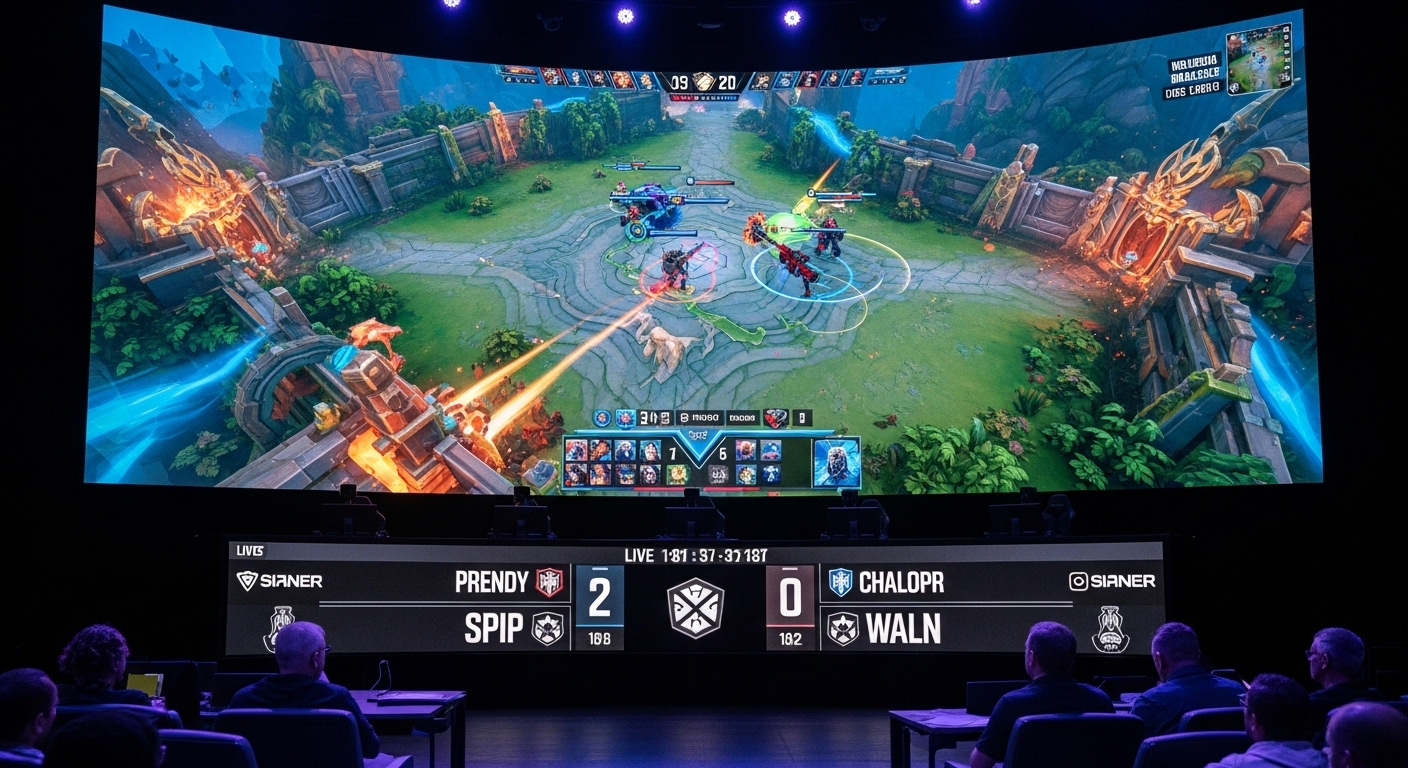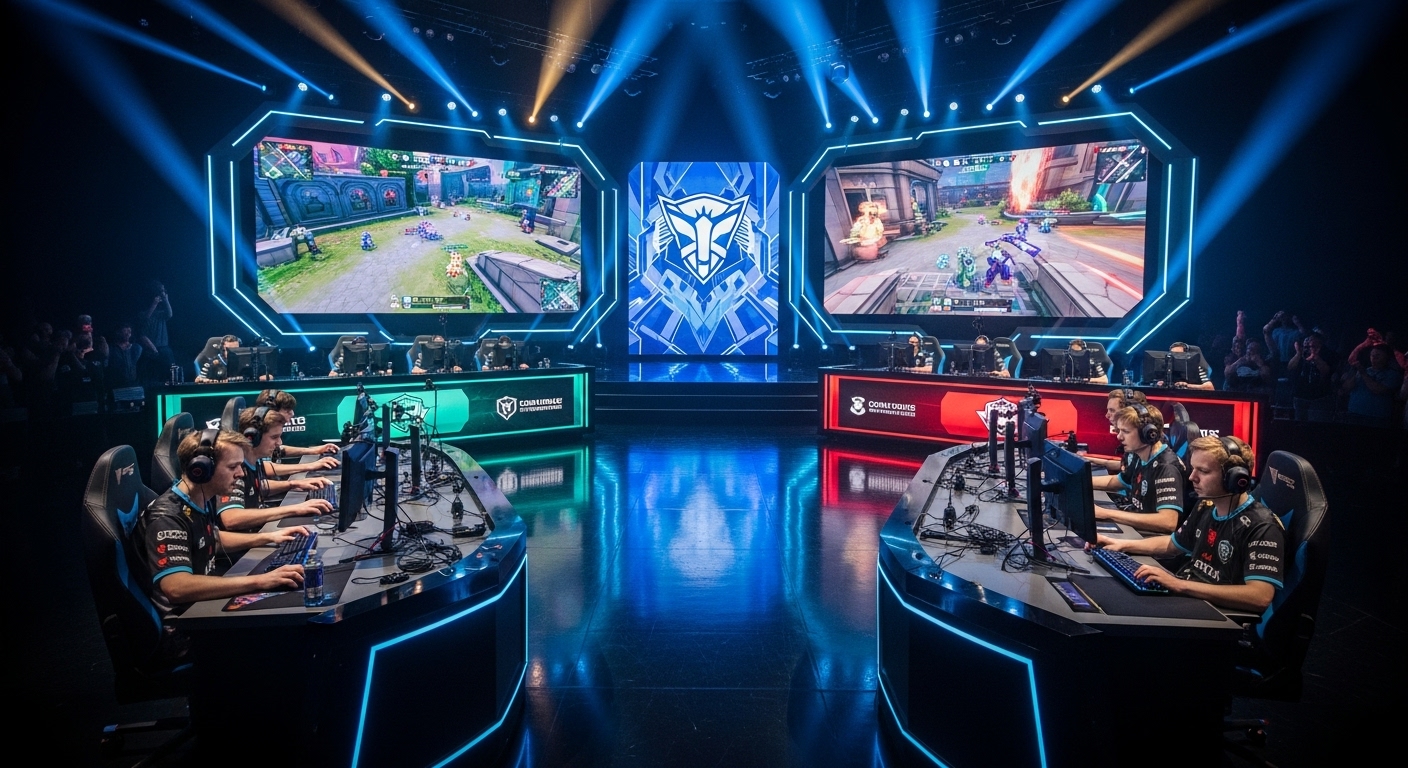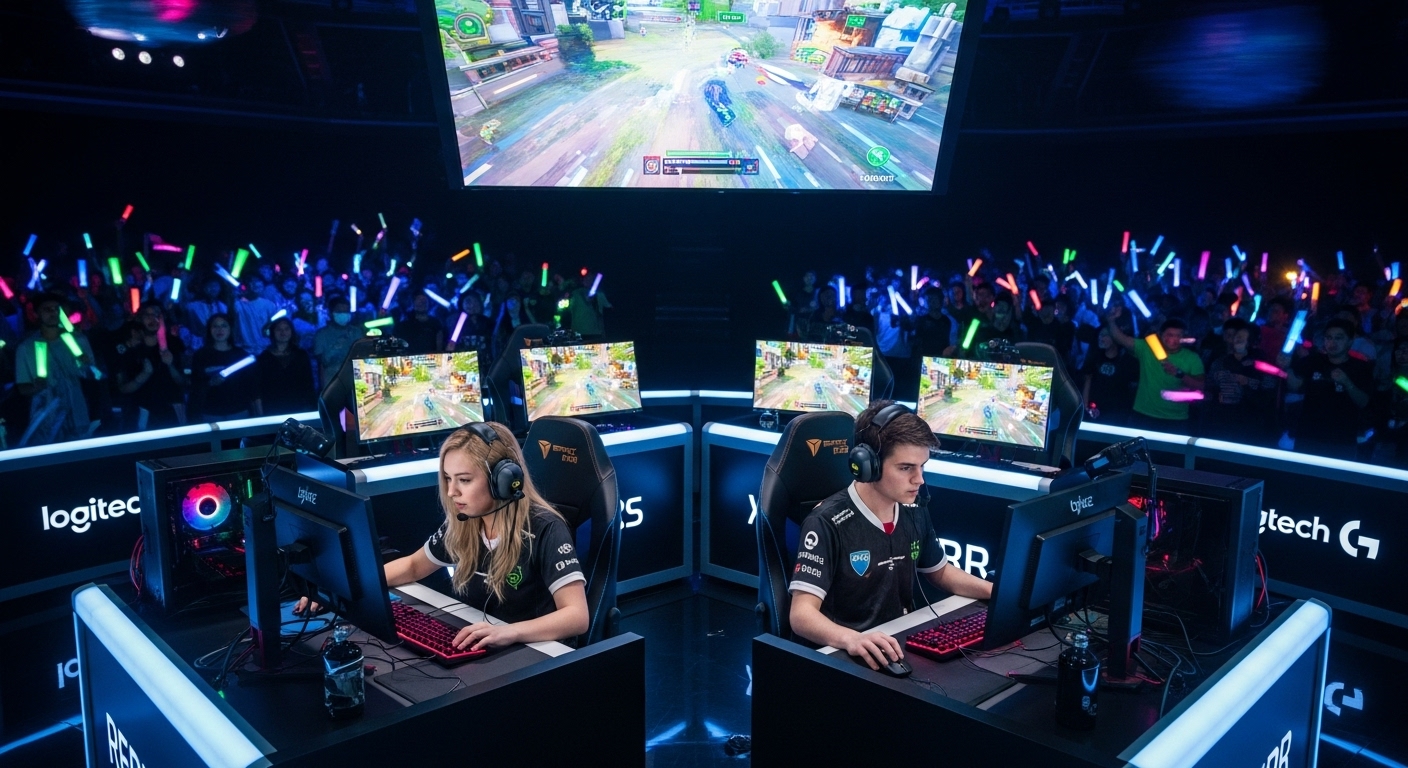Introduction to Esports
Esports, short for electronic sports, has emerged as one of the fastest-growing entertainment industries in the world. What was once a niche hobby for passionate gamers has now transformed into a global phenomenon, attracting millions of players, spectators, and investors. From the early days of arcade tournaments to the massive global competitions filling stadiums today, esports has redefined what it means to be an athlete in the digital age. The world of esports is no longer confined to basements and computer cafes; it has moved into mainstream culture, reshaping sports, media, and even education.
The Early Beginnings of Competitive Gaming
The roots of esports can be traced back to the late 1970s and early 1980s, when video games began to gain popularity as a new form of entertainment. The earliest competitive gaming event is often credited to a 1972 tournament held at Stanford University, where students competed in a game called “Spacewar.” Later in the 1980s, arcade games like Pac-Man and Donkey Kong encouraged players to compete for high scores, leading to the first generation of video game champions.
The rise of home gaming consoles such as the Nintendo Entertainment System and Sega Genesis in the late 1980s brought gaming into households around the world. Magazines and early gaming communities began publishing leaderboards and score records, and competitive gaming slowly started to take shape as more than just casual fun.
The Birth of Modern Esports
The 1990s marked the birth of modern esports. With the growth of personal computers and the internet, gamers could finally compete against each other across distances. Games like Quake, StarCraft, and Counter-Strike became early staples of professional gaming. LAN parties and local tournaments began popping up everywhere, creating communities that valued skill, teamwork, and strategy.
South Korea played a crucial role in shaping esports into what it is today. The country’s government supported gaming infrastructure, and by the early 2000s, professional gaming leagues were broadcast on national television. StarCraft became a cultural phenomenon in South Korea, producing the first wave of professional players who were treated like celebrities.
The Explosion of Global Esports Competitions
The 2000s and 2010s saw an explosion of esports tournaments and leagues worldwide. Titles such as League of Legends, Dota 2, Counter-Strike: Global Offensive, and Overwatch began to dominate the competitive scene. Major tournaments offered multi-million-dollar prize pools, drawing the attention of sponsors, media companies, and fans from around the world.
Events like The International for Dota 2 and the League of Legends World Championship filled arenas and were streamed online to millions of viewers. Streaming platforms such as Twitch and YouTube Gaming gave fans direct access to watch their favorite players live, further fueling the growth of the industry.
The Esports Ecosystem
Esports is not just about the players competing on screen; it is an entire ecosystem involving organizations, sponsors, developers, event organizers, and fans. Professional teams operate much like traditional sports franchises, complete with management, coaching staff, analysts, and training facilities.
Developers play a vital role by supporting the competitive scene of their games, balancing gameplay, and funding tournaments. Major companies such as Riot Games, Valve, and Blizzard have established themselves as pillars of the esports industry.
Sponsors and advertisers have also recognized the potential of esports, investing millions into branding opportunities. Energy drinks, tech companies, apparel brands, and even car manufacturers have joined the esports revolution.
The Life of a Professional Esports Player
Becoming a professional esports player is no easy feat. It requires countless hours of training, strong teamwork, and mental resilience. Players often dedicate eight to twelve hours a day to practice, analyze strategies, and maintain peak performance.
Most esports athletes begin their careers at a young age, sometimes as teenagers, competing in online ladders and amateur tournaments before being noticed by professional teams. The lifestyle can be intense and mentally demanding, as players must constantly adapt to new strategies and evolving game updates.
However, the rewards can be substantial. Top-tier players earn salaries, sponsorships, and winnings that can rival those of professional athletes in traditional sports. Some have even become global icons, recognized not only for their skills but also for their personalities and influence.
The Role of Technology in Esports Growth
Technology has been the backbone of esports. High-speed internet, powerful gaming PCs, and streaming platforms have made competitive gaming accessible to millions. Advancements in hardware allow for smoother gameplay and fairer competition, while online streaming has democratized the viewing experience.
Virtual reality and augmented reality are now being explored as future frontiers for competitive gaming. Cloud gaming technology may soon make esports more accessible than ever, allowing players to compete from virtually any device without needing expensive equipment.
Artificial intelligence and data analytics are also transforming esports. Teams use analytics to study opponents, improve strategies, and enhance player performance. The intersection of technology and competition continues to push the boundaries of what esports can become.
The Role of Streaming and Content Creation
Streaming platforms have been instrumental in the global success of esports. Twitch, YouTube, and Facebook Gaming have allowed fans to engage directly with players and teams. Esports professionals are not just competitors but also entertainers and influencers. Many players stream their practice sessions, interact with their fans, and build personal brands beyond competition.
This new form of audience interaction has blurred the line between sports, entertainment, and social media. Fans are no longer passive spectators; they are part of the community, contributing to discussions, fan art, and even strategy analysis.
Esports and Traditional Sports: A New Rivalry and Partnership
In the early years, esports was often dismissed by traditional sports fans as just a pastime. However, as viewership numbers and revenues skyrocketed, even the biggest sports organizations began to take notice.
Traditional sports teams such as the NBA’s Philadelphia 76ers and soccer clubs like Paris Saint-Germain have invested in esports organizations. The Olympic Committee has also explored including esports as part of future Olympic events, recognizing its growing influence and popularity among younger audiences.
This blending of esports and traditional sports represents a shift in how society defines athleticism. Physical endurance is being complemented by mental agility, precision, and teamwork in the digital arena.
The Economic Impact of Esports
Esports has evolved into a billion-dollar industry. The revenue streams include sponsorships, media rights, merchandise, ticket sales, and advertising. Major tournaments bring tourism and employment opportunities to host cities, much like traditional sports events.
Educational institutions have started offering esports scholarships, recognizing the legitimacy of gaming as a professional path. Universities now host competitive esports teams, and courses on esports management and production are becoming increasingly common.
The economic potential of esports extends beyond tournaments. Game developers benefit from in-game purchases, while broadcasters profit from massive viewership numbers. Investors and venture capitalists see esports as a long-term growth market, leading to continuous expansion and innovation.
Challenges Facing the Esports Industry
Despite its success, esports faces several challenges. Player burnout, mental health issues, and lack of standardized regulations are common concerns. The competitive environment can be harsh, and young players often struggle to maintain balance between personal life and professional obligations.
Cheating and match-fixing are also persistent threats. Developers and organizations have implemented strict anti-cheat systems and rules to ensure fairness. Additionally, issues like gender inequality and lack of diversity in esports continue to spark important discussions about inclusion and representation.
Another challenge lies in ensuring the sustainability of the industry. As esports continues to grow, maintaining a stable ecosystem that supports players, fans, and organizations alike is essential.
Esports in Education and Career Development
Esports has found its way into education systems around the world. Schools and universities now recognize the value of gaming as a learning tool that promotes teamwork, problem-solving, and critical thinking.
Programs focused on esports management, broadcasting, and production have opened new career paths. Beyond playing, individuals can pursue roles as coaches, commentators, analysts, content creators, or event organizers.
This integration into education marks a turning point for esports, transforming it from a recreational activity into a professional and academic field.
The Global Community and Cultural Influence of Esports
Esports has united people from different cultures, languages, and backgrounds. It has created a universal community connected through passion and competition. International tournaments bring together fans from every corner of the world, fostering a sense of belonging and excitement.
Culturally, esports has influenced fashion, music, and entertainment. Players and teams collaborate with artists, fashion brands, and media companies, creating a unique blend of digital culture and mainstream appeal.
The inclusivity of esports allows people of all abilities and backgrounds to participate and enjoy. Unlike traditional sports, physical limitations are not barriers, making esports one of the most accessible forms of global competition.
The Future of Esports
The future of esports looks bright and full of possibilities. As technology advances, the line between virtual and real experiences will continue to blur. Virtual reality competitions, AI-driven training, and more immersive spectator experiences are likely to become standard.
Esports may soon become part of school curriculums and even larger global sporting events. With increasing investment and growing fan bases, it is poised to surpass many traditional sports in popularity and revenue.
Furthermore, the professionalization of the industry will bring better player welfare, structured leagues, and long-term sustainability. The integration of blockchain technology and digital ownership could also change how tournaments, sponsorships, and fan interactions operate.
Conclusion: The Legacy of Esports
Esports has evolved from simple arcade challenges to global stages filled with cheering fans and million-dollar prizes. It is more than just gaming; it is a reflection of how technology and culture intersect to create something extraordinary.
What makes esports unique is its power to connect people. It bridges gaps between nations, generations, and lifestyles. It celebrates skill, strategy, and innovation in a way that few other industries can match.
As we move forward into a digital future, esports will continue to grow, adapt, and inspire. Whether you are a player, a fan, or simply an observer, the world of esports offers a glimpse into the future of competition and entertainment — a future that is fast, connected, and limitless.



